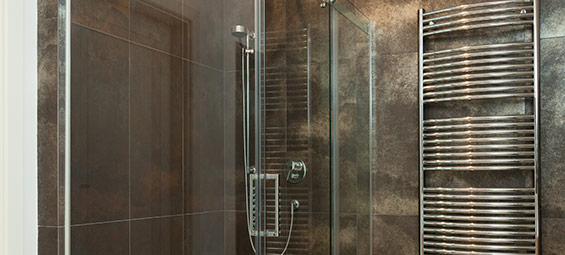Giant tubs have fallen out of favor. Over the last few years, designers and remodelers have been getting more and more requests to replace the tub in the master bathroom with a large, luxury shower. The question many homeowners face when considering this option is whether having a master bath without a tub will affect resale value down the road.
The sad fact is that most of us just don’t have the time to lounge in a tub. The majority of us take showers daily but only take a bath occasionally, as a way to relax. One survey reported that about one-third of women and less than 10 percent of the men surveyed said they wanted a tub in the master bath, and that was only if the bath also had a large shower. Showers are also gaining favor as people are looking for ways to conserve water. A large tub can use as much as 80 to 100 gallons of water, and often all of your hot water, before it is filled. A typical shower will use far less water. Although if you have multiple shower heads going at once, this may negate your water savings.
Removing the tub gives you more space to play with when designing your bathroom. It allows you the space to create a large, luxurious walk-in shower. But does it come at a price?
Typically, a bathroom must have a toilet, sink, and tub to be considered a full bath. A bath with a toilet, sink, and shower, but no tub, would be considered a three-quarter bath. The master bath can be a major selling point or it can be a deal breaker. Most potential buyers expect the master bath to be a full bath and include a tub. While some prospective buyers say the lack of a tub wouldn’t deter them, especially if the shower was decked out with lots of features, others say it would cause them to pass on the house. Some real estate agents have advised that as long as your home has at least one tub, even if it’s not in the master bath, you should be okay. If the master bath tub is your only tub, removing it could be detrimental to the value of your home and exclude many potential buyers. This is particularly true of couples with young children who find it too difficult to try and bathe a small child in a shower.
When deciding whether to ditch the tub for a larger shower, you should consider how long you plan to be in your home. The rule of thumb is that if you plan to live in your house for less than five years, you should design to sell. If you plan to live in it for longer than five years, you should design it to suit your needs rather than for the benefit of future owners.
If you decide to go for the shower, make sure it’s a large shower with great features, like multiple shower heads, body jets, benches, rainfall shower heads, and high-end fixtures. Keep in mind that if you operate all of the shower heads at the same time, you will drain your hot water heater faster. You may want to consider upgrading to a larger hot water heater at the same time.
If you decide not to skip the tub, there are options. Select a small tub that will give you more space for a bigger shower. Using a freestanding tub takes up less space since they don’t have tub decks.

